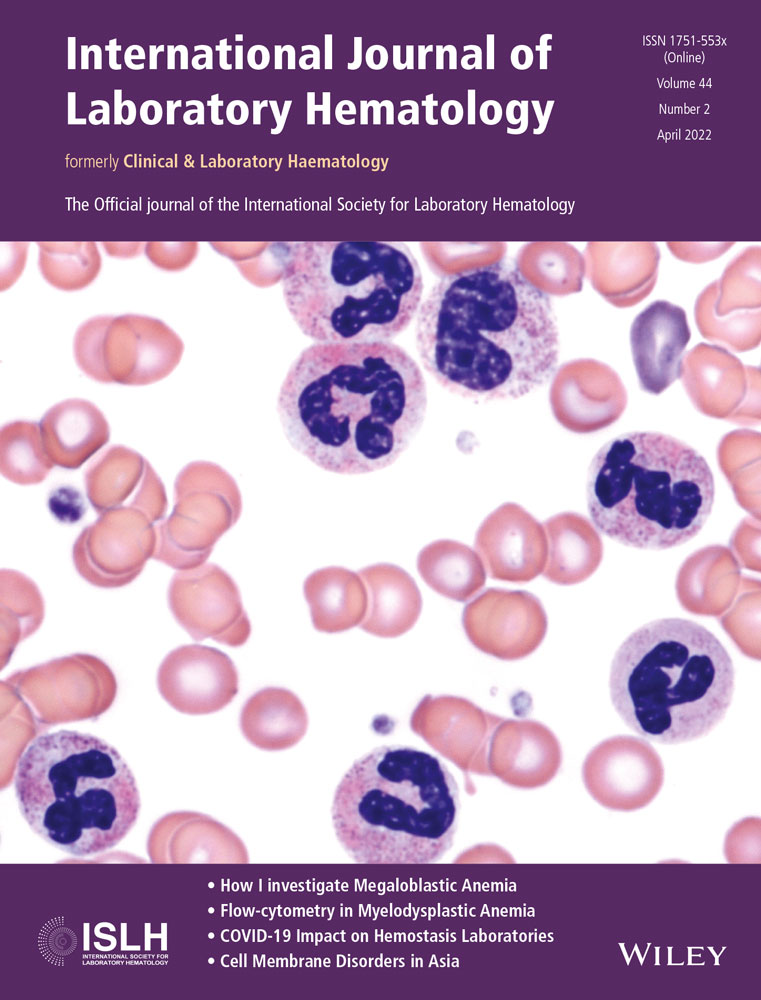The clinical characteristics and prognosis of Chinese acute myeloid leukemia patients with CSF3R mutations
Xiuhua Chen and Jing Xu contributed equally to this work.
Funding information
This work was supported by the National Natural Science Foundation of China (NO.81670126)
Abstract
Introduction
The colony-stimulating factor 3 receptor (CSF3R) controls the proliferation of myeloid progenitors and differentiation into neutrophils. However, the clinical features and prognostic significance of CSF3R mutations in primary acute myeloid leukemia (AML) patients are still unclear.
Methods
158 newly diagnosed AML patients were retrospectively evaluated in our study. Amplicon-based next-generation sequencing (NGS) and multiplex-nested reverse-transcription polymerase chain reaction (RT-PCR) were used to investigate the 34 genes and 43 fusion genes associated with leukemia. In addition, clinical features, mutation incidence, and survival outcomes were compared between patients with CSF3R mutation and patients with wild-type CSF3R.
Results
In our study, CSF3R mutations were found in 7.6% (12/158) cases. The membrane-proximal amino acid substitution T618I (58.3%) was the most frequent mutation. CSF3R mutations were associated with higher WBC counts (P = .035). CEBPA mutation, TET2 mutation, and RUNX1-RUNX1T1 translocation were the most common co-mutations of CSF3R. The CSF3R gene was mutually exclusive with signal transduction genes (P = .029), while positively associated with TET2 mutations (P = .014). CSF3R mutations had no effect on CR1 (P = .935), R (P = .625) and OS (P = .1172). Patients with CSF3R mutations had a worse DFS (P = .0352) than those with wild-type CSF3R. Multivariate survival analysis showed that CSF3R mutation was an independent risk factor for DFS of primary AML patients (HR=2.048, 95%CI: 1.006-4.170, P = .048).
Conclusion
AML patients with CSF3R mutations had unique clinical features and gene co-mutation spectrum. CSF3R mutation was an independent risk factor for DFS and could be a potential prognostic marker and therapeutic target for Chinese primary AML patients.
CONFLICT OF INTEREST
The authors declare no conflict of interest.
Open Research
DATA AVAILABILITY STATEMENT
The data that support the findings of this study are available from the corresponding author upon reasonable request.




